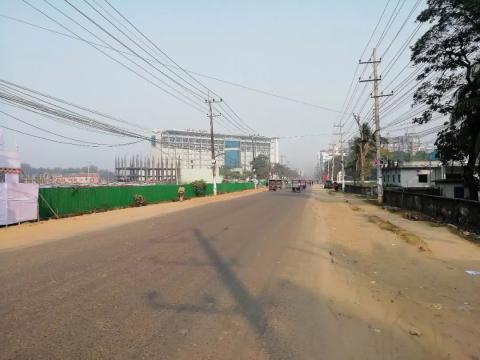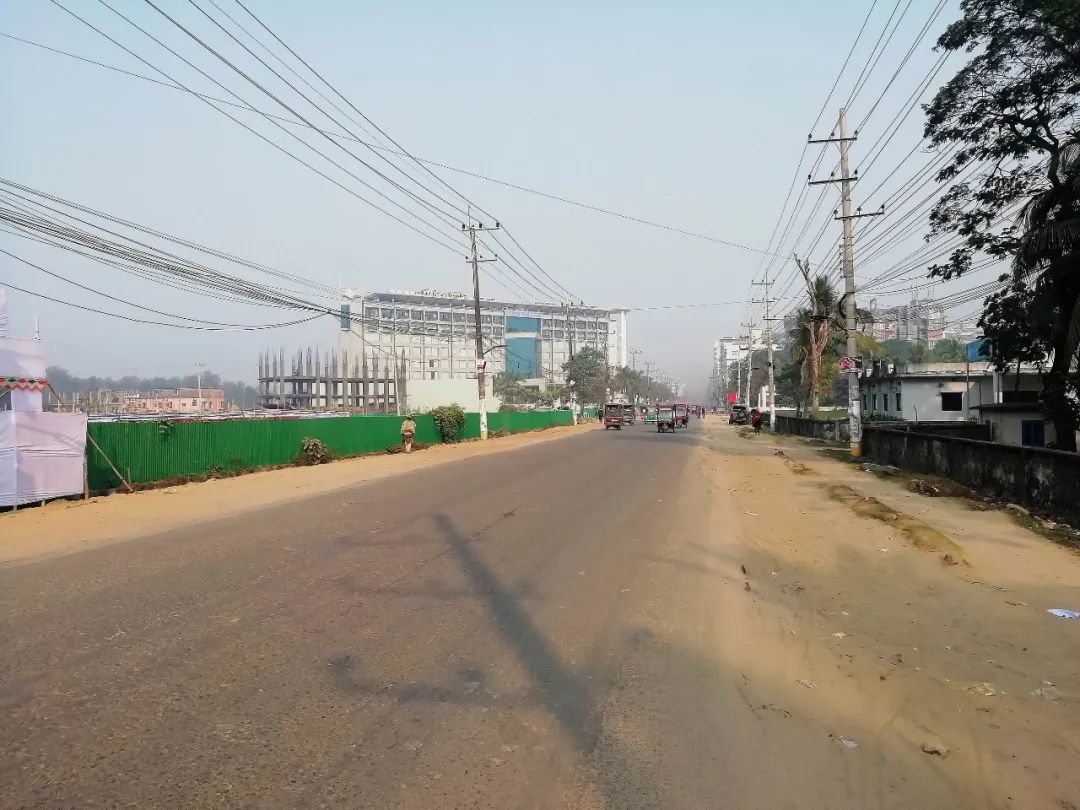
I arrived in Cox’s Bazar early in the morning. My purpose of coming here was entirely to see the southeastern corner of Bangladesh. Visiting geographical landmarks has always been my travel theme. Cox's Bazar is a port city in the southeastern part of Bangladesh. It is 150 kilometers away from Chittagong in the north. During World War II, it was a military base and now a health resort. The north, east and south are surrounded by hills, and the west is a beach with a length of 110 kilometers, making it one of the longest beaches in the world.
Cox's Bazar is a very small city with little to see.



The most lively place in the city is the beach. Compared with the noisy scenes of domestic beaches, it was relatively deserted here. Maybe it was the wrong season and no one was seen swimming.






After spending two hours in Cox’s Bazar, I took a bus to Chittagong.

roadside shop


School

Chittagong Chattogram is the largest port city and the second most populous city in Bangladesh. Located on the lower reaches of the Gornopuri River on the northeastern shore of the Bay of Bengal, 16 kilometers from the river mouth, Chittagong Port was built in the 16th century. The port has 28 docks and modern loading and unloading equipment. Sea-going ships can enter the port along the Gornopri River, and the city's industry and commerce are developed. 80% of Bangladesh's international trade and 40% of its industrial output are generated in Chittagong.
Chittagong was originally a fishing village. Arakanese, Arabs, Persians and Portuguese came here to trade. In 1340 the Sultan of Soragaon conquered Chittagong. In 1518, the Portuguese Imperial Fleet attacked the Sultanate of Bengal. In 1538, the Arakan Kingdom again occupied Chittagong. In 1666, Chittagong was occupied by the Mughal Empire. In 1824, the Burmese army occupied Chittagong. After the partition of India and Pakistan in 1947, it developed rapidly and became the main industrial base and transportation hub of East Pakistan. Bangladesh's declaration of independence was proclaimed in Chittagong in 1971.
There are not many tourist attractions in Chittagong. There are some colonial-era buildings and an ethnographic museum. Tourists can also visit the port. The rest is just shopping to see the local customs.

I got off the car next to the bridge and walked across the bridge to see the scene of hundreds of boats competing in the Gornopri River. This river can be traced by sea ships.



Then I left the river and walked north into the alley. There were more people.


Meet a church Cathedral of our Lady and Holy Rosary


a school

Not far ahead is the Chattogram Court Building, a famous building in Chittagong. This is a pink building built by the then East India Company in 1773. The center looks like a church, and the two sides look like office buildings. It is now inconspicuous. , but it should have been a glorious landmark more than 200 years ago.




The clothing wholesale market next to the court, the people here are more eye-catching than the buildings.



Then I took a bus to the Chittagong Ethnological Museum. This museum was built in the 1960s. The exhibition hall includes four small exhibition halls and a small auditorium. It introduces the various ethnic groups of Bangladesh through photos and handicrafts. Culture, there are also many archaeological artifacts here.



former curator

Exhibits






High-rise buildings next to the museum

There are also pools here like those in India


I walked to the dock and saw stevedores carrying bags. It seemed like labor was cheap here.



I rushed to the train station in the evening



Drive to Sylhet

After driving all night, we arrived in Sylhet early the next morning.


Sylhet is the largest city in northeastern Bangladesh. Located on the right bank of the Surma River. The suburbs are full of hills and small jungles, rich in sugar cane, tea, fertilizers and liquefied petroleum gas. It is now an industrial and commercial city.

Hazrat Shah Jalal is a famous Sufi Muslim in Bangladesh. He was buried in Sylhet, making the Hazrat Shah Jalal Mazar in the city the largest Muslim pilgrimage site in Bengal.
As soon as I got off the train, I rented a tricycle and headed to the Hazrat Shah Talabani Mosque.

mosque gate

Look in the opposite direction

In the hospital




indoor

There is also a school here, and the imam is giving lessons


Behind the mosque is a cemetery

Tomb of Hazrat Shah Talabani

Tall buildings outside the mosque

After visiting the mosque, I walked to the bus station and saw the street scenes along the way.


bridge



river

Urban sculpture-Clock Tower Ali Amjad’s Clock


people


The ticket guy at the bus station wanted to take a photo with me

This is the case in all cities in Bangladesh, and with the serious pollution across the country, the best "scenery" is still portraits.
That night I drove to Mymensingh.
Two-day itinerary diagram

